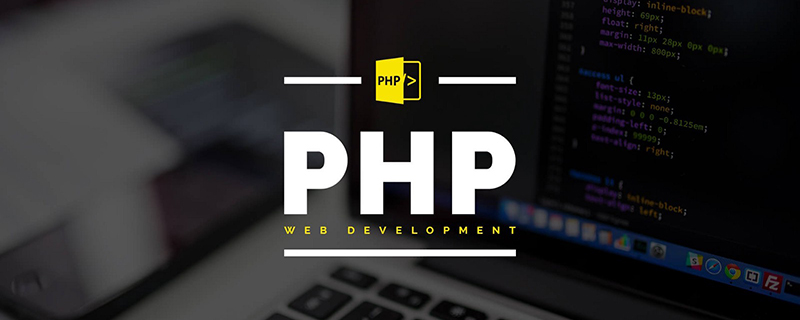What to do if the php cgi process takes up too much
Solutions to the problem that the php cgi process occupies too much space: 1. Disable the eAccelerater module from "php.ini"; 2. Use the Linux proc virtual file system to find the specific problem program; 3. Use the Linux proc virtual file system to find the specific problem program; proc file system to find out the reason.

Recommended: "PHP Video Tutorial"
Under normal circumstances, PHP-CGI is only used when the user accesses it It will occupy CPU resources, but recently a colleague reported that the PHP-CGI process on the server occupies a lot of CPU, but the access traffic is very small. This is obviously an abnormal phenomenon, indicating that there is a fault somewhere. The following possible reasons for this problem are shared with you.
1. Compatibility issues
If there are problems with php extensions being compatible with php versions, similar cases have been reported. There are problems with eAccelerater being compatible with certain php versions. Specifically After starting the php-cgi process during performance,
ran for more than 10 minutes, which was extremely slow, but static resource access was very fast, and the server load was also normal (this shows that there is no problem with nginx in the server parsing function, but with php-cgi process issues).
Solution
Disable the eAccelerater module from php.ini, and then restart the php-cgi process.
2. There may be an infinite loop in the program
If there is an infinite loop in the program, it will definitely cause the server load to be extremely high (use the top command to check the load as high as 100).
Solution
Use the Linux proc virtual file system to find the specific problem program.
3. Unreasonable use of session by PHP program
We can see in the information that this happened in the open source Weibo note dog program. The specific manifestation is that there is a small amount of PHP- The cpu usage rate of cgi processes (no more than 10) reaches more than 98%,
The server load is between 4-8,
Solution
requires the help of Linux proc file system find out the reason.
4. There are overly time-consuming and impossible operations in the program
If this is the case, it is because the program itself was not written in a standardized manner when it was written. This needs to be solved jointly with the software designers and programming engineers.
The above is the detailed content of What to do if the php cgi process takes up too much. For more information, please follow other related articles on the PHP Chinese website!

Hot AI Tools

Undresser.AI Undress
AI-powered app for creating realistic nude photos

AI Clothes Remover
Online AI tool for removing clothes from photos.

Undress AI Tool
Undress images for free

Clothoff.io
AI clothes remover

Video Face Swap
Swap faces in any video effortlessly with our completely free AI face swap tool!

Hot Article

Hot Tools

Notepad++7.3.1
Easy-to-use and free code editor

SublimeText3 Chinese version
Chinese version, very easy to use

Zend Studio 13.0.1
Powerful PHP integrated development environment

Dreamweaver CS6
Visual web development tools

SublimeText3 Mac version
God-level code editing software (SublimeText3)

Hot Topics
 1386
1386
 52
52
 PHP 8 JIT (Just-In-Time) Compilation: How it improves performance.
Mar 25, 2025 am 10:37 AM
PHP 8 JIT (Just-In-Time) Compilation: How it improves performance.
Mar 25, 2025 am 10:37 AM
PHP 8's JIT compilation enhances performance by compiling frequently executed code into machine code, benefiting applications with heavy computations and reducing execution times.
 OWASP Top 10 PHP: Describe and mitigate common vulnerabilities.
Mar 26, 2025 pm 04:13 PM
OWASP Top 10 PHP: Describe and mitigate common vulnerabilities.
Mar 26, 2025 pm 04:13 PM
The article discusses OWASP Top 10 vulnerabilities in PHP and mitigation strategies. Key issues include injection, broken authentication, and XSS, with recommended tools for monitoring and securing PHP applications.
 PHP Secure File Uploads: Preventing file-related vulnerabilities.
Mar 26, 2025 pm 04:18 PM
PHP Secure File Uploads: Preventing file-related vulnerabilities.
Mar 26, 2025 pm 04:18 PM
The article discusses securing PHP file uploads to prevent vulnerabilities like code injection. It focuses on file type validation, secure storage, and error handling to enhance application security.
 PHP Encryption: Symmetric vs. asymmetric encryption.
Mar 25, 2025 pm 03:12 PM
PHP Encryption: Symmetric vs. asymmetric encryption.
Mar 25, 2025 pm 03:12 PM
The article discusses symmetric and asymmetric encryption in PHP, comparing their suitability, performance, and security differences. Symmetric encryption is faster and suited for bulk data, while asymmetric is used for secure key exchange.
 PHP Authentication & Authorization: Secure implementation.
Mar 25, 2025 pm 03:06 PM
PHP Authentication & Authorization: Secure implementation.
Mar 25, 2025 pm 03:06 PM
The article discusses implementing robust authentication and authorization in PHP to prevent unauthorized access, detailing best practices and recommending security-enhancing tools.
 How do you retrieve data from a database using PHP?
Mar 20, 2025 pm 04:57 PM
How do you retrieve data from a database using PHP?
Mar 20, 2025 pm 04:57 PM
Article discusses retrieving data from databases using PHP, covering steps, security measures, optimization techniques, and common errors with solutions.Character count: 159
 PHP CSRF Protection: How to prevent CSRF attacks.
Mar 25, 2025 pm 03:05 PM
PHP CSRF Protection: How to prevent CSRF attacks.
Mar 25, 2025 pm 03:05 PM
The article discusses strategies to prevent CSRF attacks in PHP, including using CSRF tokens, Same-Site cookies, and proper session management.
 What is the purpose of prepared statements in PHP?
Mar 20, 2025 pm 04:47 PM
What is the purpose of prepared statements in PHP?
Mar 20, 2025 pm 04:47 PM
Prepared statements in PHP enhance database security and efficiency by preventing SQL injection and improving query performance through compilation and reuse.Character count: 159




